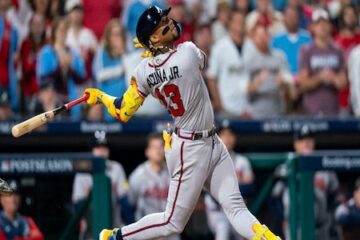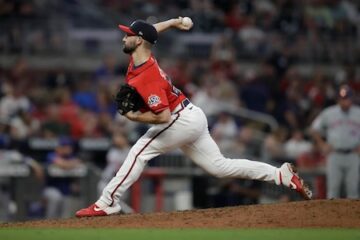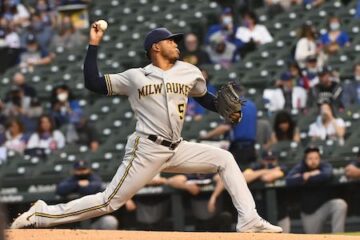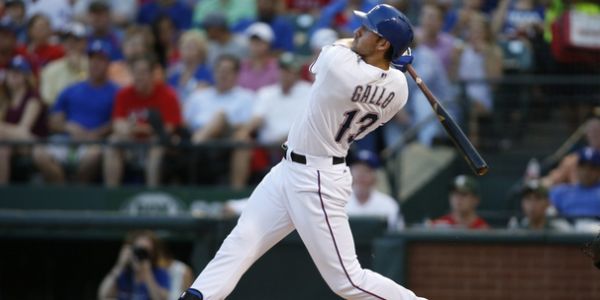Hold or Fold: Roy Halladay
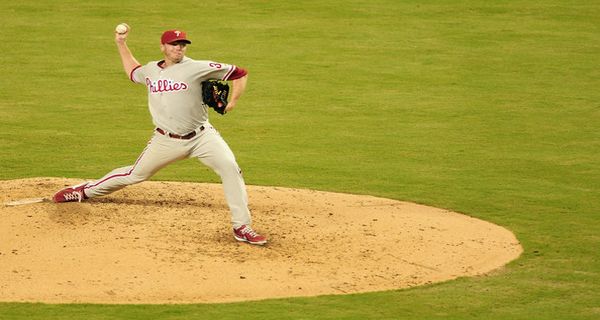
Once we get past the first week of the season we get to the point where fantasy baseball players become nervous about certain players on their roster. There is an internal voice in every player’s head when the switch gets turned from “it’s early” to “I’m worried.” That switch is different for every fantasy player and each individual ML player has earned a certain amount of patience. Of course, the amount of patience depends on the player. So, I’m looking at some guys that are making us nervous at this point in April.
The very first lesson we need to learn is that little can be gained by analyzing this season by itself. Most position players have yet to make it to 50 plate appearances and most starting pitchers have made two starts. There isn’t much to gain by looking too heavily at early season performance. However, if you look at the last several seasons you can see if what we are seeing is a continued downturn or if it is likely a blip on the map. Even then, what we are doing today amounts to merely a guess.
Roy Halladay has looked awful in two early starts and looked awful for most of the spring before that. Those two facts alone make people worried, but when you couple that with the fact that he had an injury plagued 2012 campaign and is comfortably in his mid thirties you have to wonder whether he is approaching an abrupt end to his career. He wouldn’t be the first pitcher to seemingly die prematurely and he won’t be the last. Predicting a pitcher’s career path is the most challenging thing for fantasy players and baseball executives alike. So, let’s start with some basic numbers to see if we can see anything.
|
W-L |
INN |
ERA |
K/9 |
BB/9 |
HR/9 |
|
| 2009 |
17-10 |
239 |
2.79 |
7.83 |
1.32 |
0.83 |
| 2010 |
21-10 |
250 |
2.44 |
7.86 |
1.08 |
0.86 |
| 2011 |
19-6 |
233 |
2.35 |
8.47 |
1.35 |
0.39 |
| 2012 |
11-8 |
156 |
4.49 |
7.60 |
2.07 |
1.04 |
If you judge a pitcher by these numbers alone you might as well consult your daily horiscope or a Magic Eight Ball to find your answer. Yes, his ERA was up and his innings were down. That can be a cause for concern or simply evidence that a freak injury derailed his season. A look at the strikeouts show that he approached his norms in that department, but we saw an increase in walks. That is alarming, but it has to be taken in context. Most pitchers would kill for that kind of strikeout to walk ratio. So, that alone may point to some decline, but it shouldn’t point to him falling off the map either.
The home run rate is somewhat concerning as it went from solidly above average to slightly below average in one year (we ignore the abnormally low 2011 totals). Still, we have to be very careful to read too much into that too soon. There are indicators that could point to bad luck and there are indicators that could point to something for nefarious going on. We’ll have to wait and see on that one.
The next set of numbers we will look at is what could be called the luck factor table. Essentially, we are looking at numbers the pitcher have less control over. Obviously, we can’t say they have no control as we will see, but when we distill those things that the pitcher has little or no control out we can see a truer representation of pitcher performance. Fielding Independent pitching (FIP) and Fielding Independent Pitching with neutral home run rate (xFIP) can show us how much a pitcher is actually slipping or whether it is something else.
|
FIP |
xFIP |
BABIP |
LOB% |
HR/FB |
FB% |
|
| 2009 |
3.06 |
3.00 |
.306 |
79.0 |
10.6 |
29.3 |
| 2010 |
3.01 |
2.80 |
.290 |
82.7 |
11.3 |
29.7 |
| 2011 |
2.20 |
2.71 |
.298 |
78.1 |
5.1 |
30.6 |
| 2012 |
3.69 |
3.60 |
.301 |
69.1 |
12.0 |
32.3 |
The problem with gauging a decline is that 2011 was an abnormally good season for Halladay, so 2012 looks especially bad in comparison. When you compare 2012 with 2009 and 2010 we see some decline, but the decline definitely does not match the raw numbers from 2012. That usually indicates that a pitcher should be better the following season. The decline can be explained through a slightly higher home run per flyball rate and a considerably lower rate of outs with runners in scoring position. Both of those are considered luck statistics and both point to expected improvement for Halladay this season.
However, the news is not all good. His flyball rate has steadily climbed each season. That will be explained when we look at the next table (Pitch F/X data). Flyballs are not all bad as a higher percentage of those turn into outs than any other batted ball. Still, all home runs are classified as flyballs by definition, so a higher number of flyballs cannot help but turn into a higher number of home runs.
|
FB |
OSwing |
ZSwing |
OContact |
ZContact |
SwStr |
|
| 2009 |
92.6 |
31.4 |
66.2 |
63.2 |
87.8 |
9.6 |
| 2010 |
92.6 |
33.5 |
65.6 |
64.6 |
87.6 |
9.8 |
| 2011 |
92.0 |
34.9 |
66.5 |
62.8 |
86.9 |
10.8 |
| 2012 |
90.6 |
34.9 |
65.6 |
66.7 |
85.3 |
10.6 |
Each of these is vitally important, so let’s go step by step. The first category is the average velocity of his fastball. Halladay was never what you would consider an elite power pitcher, but his fastball velocity was certainly very good. It was enough to keep hitters honest until last season when we saw a considerable drop off. Suddenly, most hitters could handle the high fastball and that is likely where we saw an increase in both the swings outside the zone (Oswing) and the contact outside the zone (Ocontact).
At first glance, the increase in swinging strikes (SwStr) would appear to be good news, but there are multiple ways to look at it. If his stuff appears to be more hittable then more hitters will attempt to hit that fastball (thus the higher swing rates). There will be more swings and misses by definition, but there are obviously more instances where hitters are handling that pitch. If you reference the flyball rate again you will notice that.
Early returns have Halladay’s velocity down again in 2013 to 90.0. Reports from the games themselves have some guns not reaching 90 at any point in his first two starts. We can assume one of three things from that information. First, he could be going through a dead arm period that some pitchers experience late in Spring Training. If that is the case we would expect his velocity to steadily increase as the season moves on. If this is the case then Halladay will become the Halladay of old.
Of course, there are two other possibilities. Secondly, Halladay could just be getting to the point in his career where his velocity will be down. He has surpassed the 2500 inning mark in his career, so it is not completely out of the question to suggest that he is on the downturn in his career. Still, numerous pitchers exist around 90 MPH and live to tell about it. In particular, when the control returns he should be a very serviceable pitcher even if he isn’t the Doc Halladay of old. Finally, the drop in velocity (and control) could be a sign of a serious arm injury. In that case, he would likely have major surgery and then return the following season.
Halladay himself has never complained of pain, but great players rarely ever make excuses for poor performance. The Phillies seem content to let him pitch out his problems, so I would wait and see on this. If you have bench spots available for your pitchers you can always stash him there until you feel more comfortable. There is no law that requires you to start every pitcher when it is their turn to pitch. I have him on two of my teams and that is where he will be until further notice.


